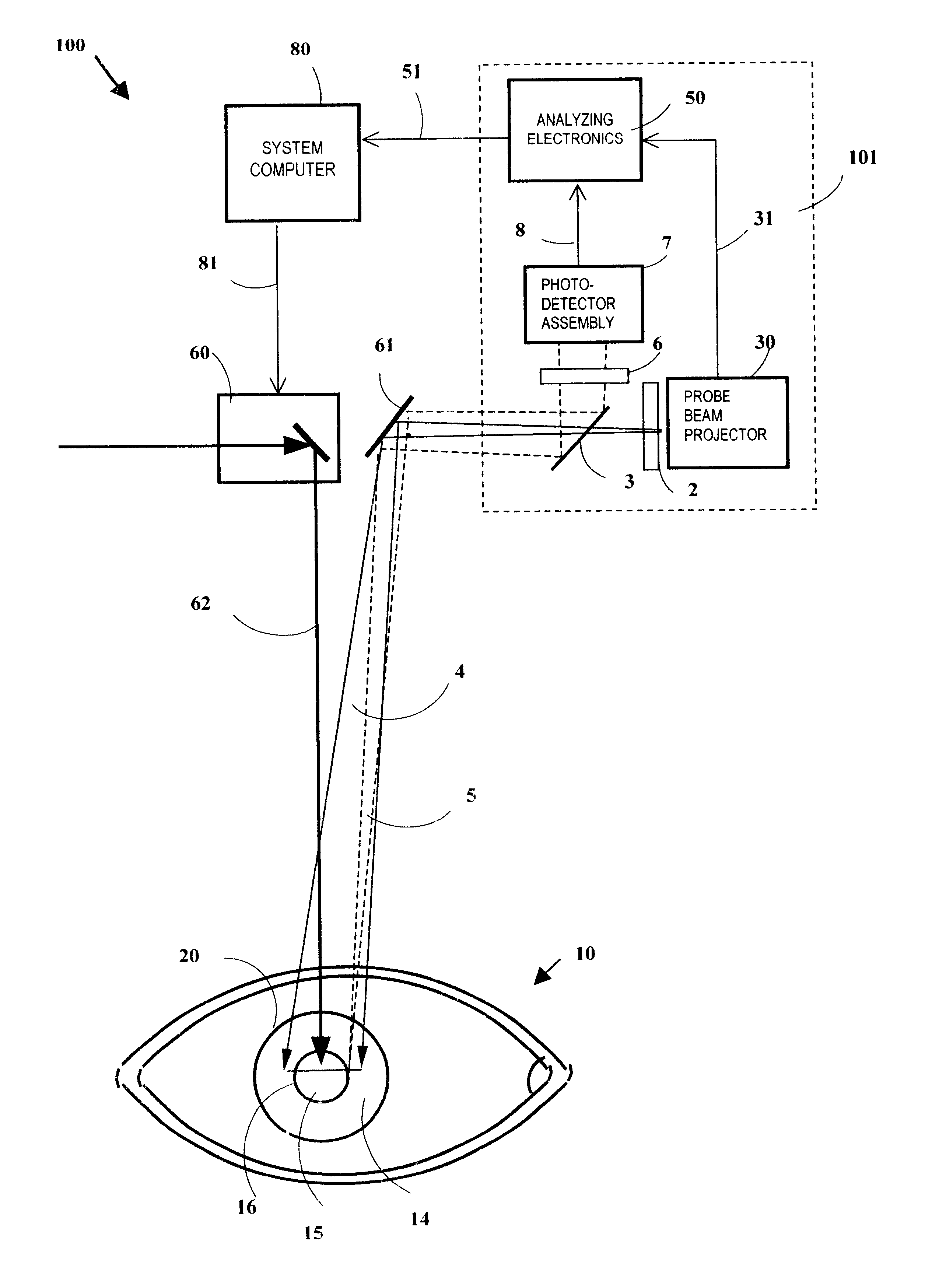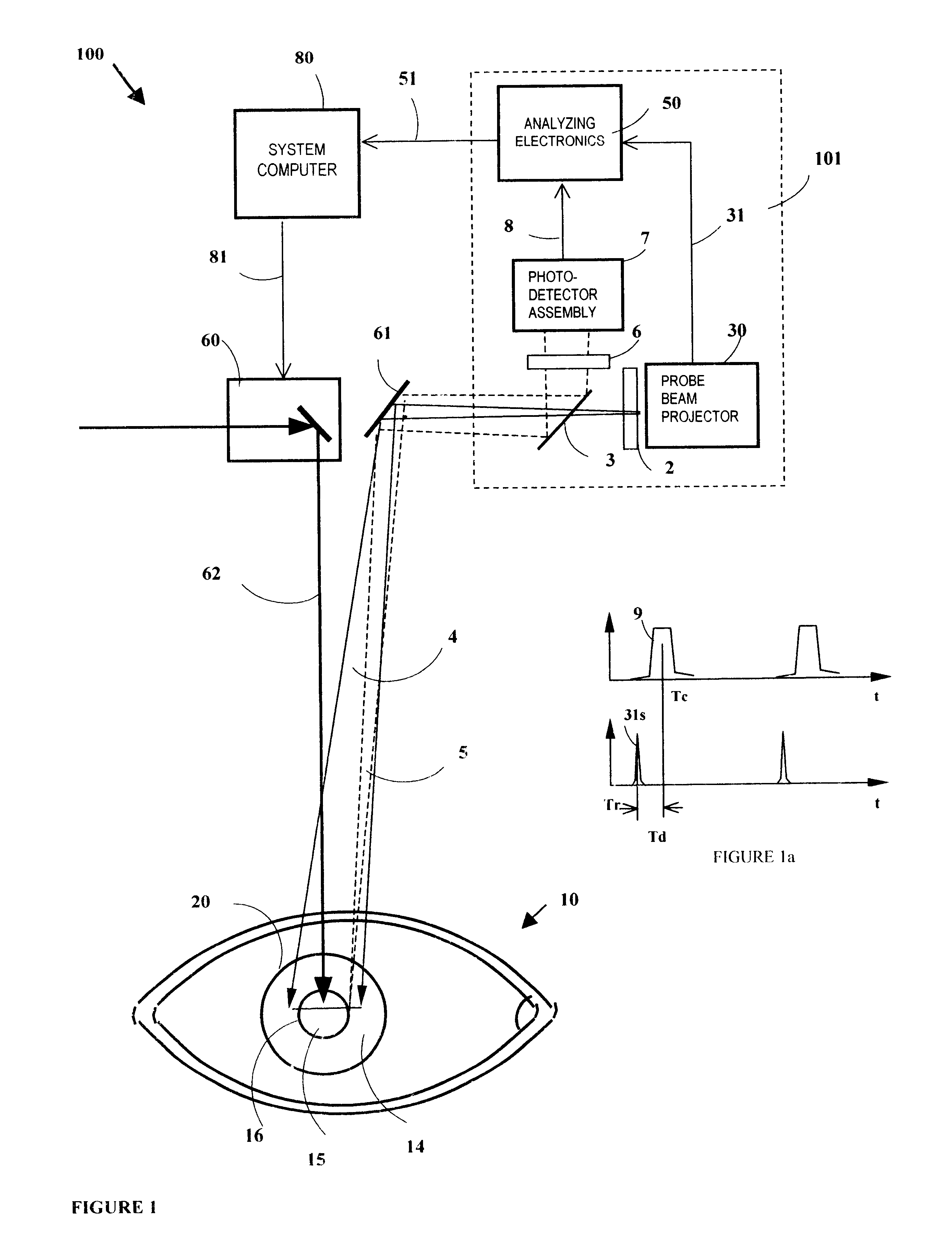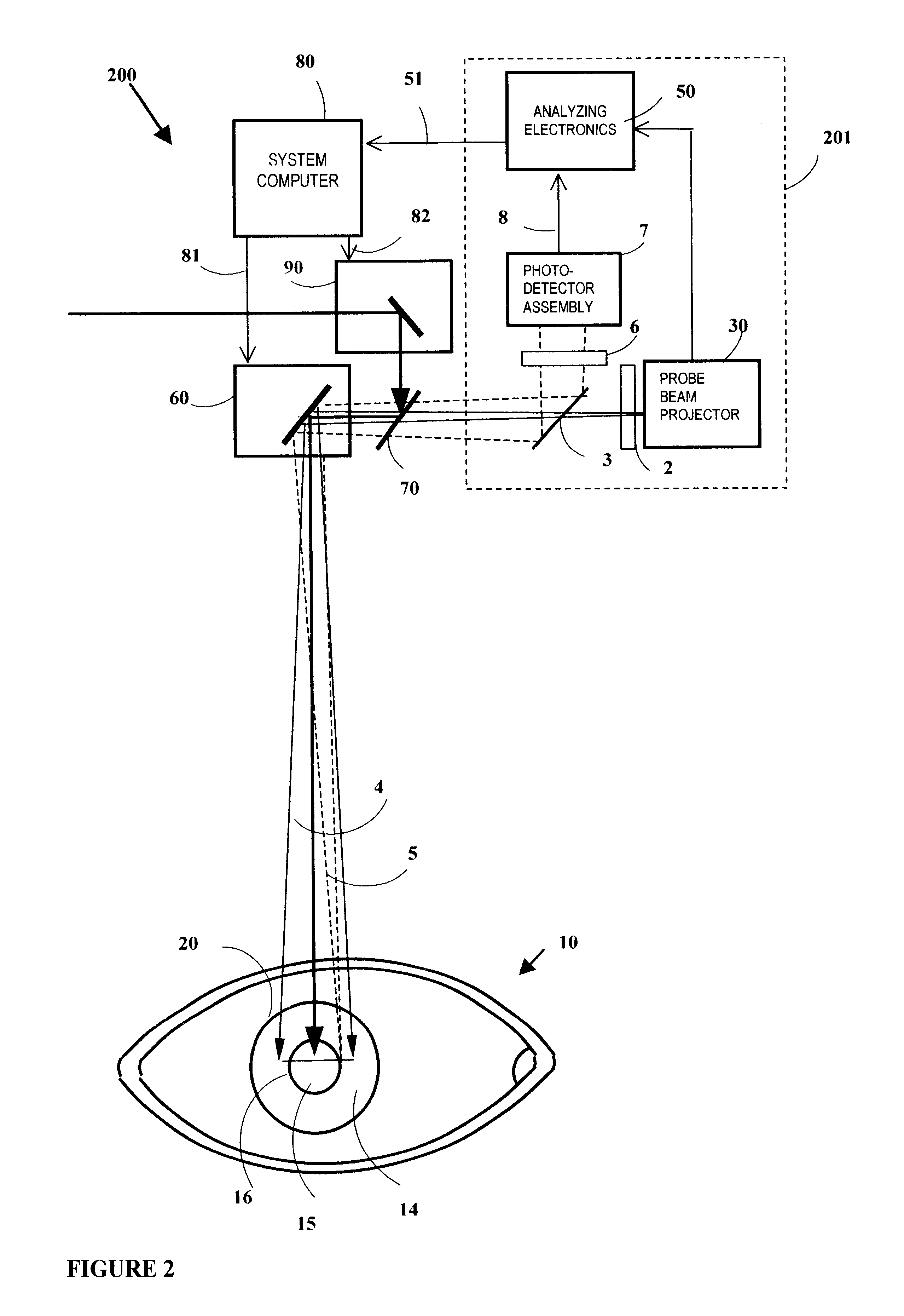Optical tracking device employing scanning beams on symmetric reference
- Summary
- Abstract
- Description
- Claims
- Application Information
AI Technical Summary
Benefits of technology
Problems solved by technology
Method used
Image
Examples
Embodiment Construction
FIG. 1 is a schematic diagram of an optical tracking device 101 in an open loop configuration for a surgical laser beam delivery system 100, in accordance with on embodiment of the present invention. The beam delivery system 100 implements an open loop configuration that includes a tracking device 101, a system computer 80, a surgical laser beam 62, and a beam steering module 60 (e.g., a x-y scanner). The tracking device 101 projects a scanning probe beam 4 and monitors the position of the eye 10. Using the eye positioning data from the tracking device 101, the system computer 80 controls the beam steering module 60 to direct the surgical laser beam 62 to follow the eye movement and to impinge on predetermined position on the eye 10. As an open loop configuration, the scanning probe beam 4 does not follow the movement of the eye 10 and only one beam steering module 60 is required.
For illustration purpose, the tracking device 101 shown in FIG. 1 projects only a first probe beam 4 sca...
PUM
 Login to View More
Login to View More Abstract
Description
Claims
Application Information
 Login to View More
Login to View More - R&D
- Intellectual Property
- Life Sciences
- Materials
- Tech Scout
- Unparalleled Data Quality
- Higher Quality Content
- 60% Fewer Hallucinations
Browse by: Latest US Patents, China's latest patents, Technical Efficacy Thesaurus, Application Domain, Technology Topic, Popular Technical Reports.
© 2025 PatSnap. All rights reserved.Legal|Privacy policy|Modern Slavery Act Transparency Statement|Sitemap|About US| Contact US: help@patsnap.com



